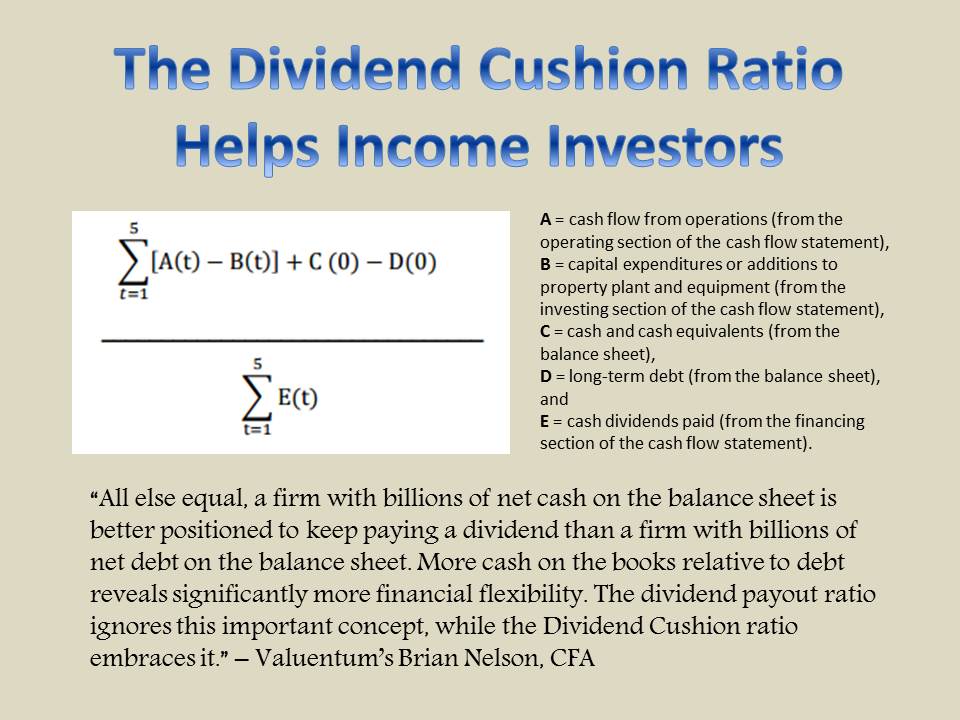Member LoginDividend CushionValue Trap |
Fundamental data is updated weekly, as of the prior weekend. Please download the Full Report and Dividend Report for
any changes.
Mar 11, 2020
Boeing Down 15%, Turbulence Still Ahead
Image: Boeing's shares have faced a perfect storm of negatives. We're still not interested.As you know, we’re *STILL* not in the business of catching falling knives, and we won’t be interested in Boeing’s shares until they have sustainably turned the corner higher. As we said in January, a sustainable turn higher won’t be for some time yet, in our view. We wouldn’t be surprised in the coming quarters if Boeing’s credit rating is cut again (Moody's recently downgraded its senior debt to Baa1 from A3, and the rating firm noted that the "ratings remain on review for downgrade"), and Boeing eventually has to cut its dividend. Upon the next report update, we expect a substantial reduction to our fair value estimate and the once-healthy 1.9 Dividend Cushion ratio (to below 1), given expectations for additional debt and reduced free cash flow forecasts. Mar 8, 2020
Coronavirus Crisis Deepens, Italy on Lockdown
Image: WHO. The epidemic curve of confirmed COVID-19 cases that have been reported outside of China is steepening. Italy remains a hotspot. The situation with COVID-19 remains dire. A vaccine may not be available for another 12-18 months, which is simply too long before what could be an overwhelming of healthcare systems around the globe. The WHO has already revised the expected mortality rate of COVID-19 higher, now 3.4%, and its catastrophic impact on the large economies of China and Italy is already being felt. The US equity markets have largely lulled investors to complacency the past decade or so, and many have been conditioned to largely ignore major events as a result, employing the buy-the-dip-at-any-price mentality and championing “stocks always go up” doctrine. However, the situation with COVID-19 could be setting the stage for an all-out financial crisis, as we outline in this piece here. With the S&P 500 at 2,972, the market continues to largely ignore the long-term risks that may come from changed behavior as a result of COVID-19. We’re reiterating our near-term 2,350-2,750 target on the S&P 500, and we encourage long-term investors to evaluate long-term charts to assess how far we have come since the March 2009 panic bottom, and how even a modest 10-20% sell-off from here (supported by reasonable forward multiples and earnings) would be largely a blip over the long term. This blip, however, may cause an outright panic, made worse by price-agnostic trading. The Fed, for example, made an emergency 50 basis-point rate cut with the market just a few percentage points off all-time highs. Emotions are running high, and investors are simply not ready for COVID-19. All else equal, panic selling is not selling with the S&P 500 at 2,972, today's levels. Just because stock prices have fallen doesn't make them cheaper. Panic selling, for example, might be selling with the S&P 500 at 2,000 (if it ever reaches those levels), and that's if reasonable valuation expectations don't warrant those levels at that time. Today, we're still at relatively overpriced valuation levels on broader market indices, and the sell-off to this point has been more reasonable than overdone, in our view. Please stay safe out there! Mar 6, 2020
ALERT: Re-establishing "Crash Protection"
Anecdotally, we are hearing lots more talk of algorithmic trading, and how it is becoming harder to sell any volume of equities without moving the markets. We have established a target range on the S&P 500 of 2,350-2,750 and explain how the COVID-19 crisis can catalyze into an all-out financial crisis (see here), and conditions have all the makings of another crash from here (see here). We're still only a few percentage points from all-time highs on most major indexes. Mar 2, 2020
Analyzing Parsons: A Defense, Intelligence, and Critical Infrastructure Solutions Company
Image Source: Parsons Corporation – February 2020 IR Presentation. Parsons Corp is a provider of technical design, engineering, and software solutions to markets within the realm of defense, intelligence, threat detection and mitigation, cybersecurity, critical and transportation infrastructure, mobility solutions, connected communities, and more. The company went public in May 2019 and has since used those IPO proceeds to fund its growth story, including the acquisition of OGSystems during the first half of 2019 (which focuses on “geospatial intelligence, big data analytics, and threat mitigation”) and QSR in the second half of 2019 (which “specializes in radio frequency spectrum survey, record and playback; signals intelligence; and electronic warfare missions”). Parsons has a compelling product line-up that is aligned with strong and growing end markets. The company generates material free cash flow, and its balance sheet remains strong, with 0.4x net leverage and a strong liquidity position. Its valuation isn't too stretched, and the firm has a deep bench in the executive suite. We like Parsons and will have more to say when the firm reports its fourth quarter earnings for fiscal 2019 before the market opens on March 10. Mar 2, 2020
Self-Storage Industry Faces a Rocky 2020, But Long-Term Outlook Remains Bright
Image Source: CubeSmart – November 2019 IR Presentation. With housing costs rising aggressively in “Tier 1” and “Tier 2” cities across the East and West coasts in the US, that has created an immense need from households for additional storage space but at a much lower cost than simply buying a larger home, apartment, or condo. This has created a major secular growth trend that we’ve highlighted repeatedly in our High Yield Dividend Newsletter (‘HYDN’) by including shares of CubeSmart and Public Storage in our HYDN portfolio, both of which are self-storage focused real estate investment trusts (‘REITs’). Click here for more information on our HYDN. Both self-storage REITs have steadily grown their already sizable payouts over the past several years and we expect that to continue to be the case going forward, with shares of CUBE and PSA yielding ~4.2% and ~3.6%, respectively, as of this writing. Feb 21, 2020
Dividend Increases/Decreases for the Week Ending February 21
Let's take a look at companies that raised/lowered their dividend this week. Feb 20, 2020
Newmont Posts a Great Earnings Report
Image Shown: A look at Newmont Corporation’s asset base, which is heavily centered on the Americas and Australia, with some exposure to West Africa as well. Image Source: Newmont – Fourth Quarter and Full-Year 2019 IR Earnings Presentation. On February 20, gold miner Newmont Corp reported a fourth quarter and full-year earnings report for 2019 that pleasantly surprised, with shares of NEM up sharply after the report during the trading session that Thursday. Back on January 13, we added a modest weighting of NEM shares to our Dividend Growth Newsletter portfolio as part of our pivot to more defensive names given rising exogenous headwinds to the global economy. While Newmont’s top-line marginally missed consensus expectations, its bottom-line handedly beat consensus expectations which is partially why investors were excited about the report. The other big reason shares of NEM march higher is likely due to Newmont noting its outlook had improved materially since closing on its Goldcorp acquisition and selling off some of its assets, as part of the normal portfolio optimization process one would expect after a major acquisition. Feb 7, 2020
Update on Wuhan 2019 Novel Coronavirus Outbreak: 31,000+ Infections, 630+ Deaths
Image Source: 2019-nCoV, Centers for Disease Control and Prevention. The number of infections and deaths related to the Wuhan 2019 Novel Coronavirus has surged since our last update, but we maintain our view that investors should keep a level head. We continue to wait to add protection to the newsletter portfolios as the market absorbs a massive liquidity injection from the PBOC. Jan 31, 2020
Dividend Increases/Decreases for the Week Ending January 31
Let's take a look at companies that raised/lowered their dividend this week. Jan 23, 2020
Why *NOW* Do You Care About Boeing’s Stock?
Image Source: Robert Sullivan. In no, way shape or form should you *now* be interested in Boeing’s stock. Let’s explain.
prev12345678910111213141516171819202122232425
26272829303132333435363738394041424344454647484950 5152535455565758next The High Yield Dividend Newsletter, Best Ideas
Newsletter, Dividend Growth Newsletter, Nelson Exclusive publication, and any reports, articles and content found on
this website are for information purposes only and should not be considered a solicitation to buy or sell any
security. The sources of the data used on this website are believed by Valuentum to be reliable, but the data’s
accuracy, completeness or interpretation cannot be guaranteed. Valuentum is not responsible for any errors or
omissions or for results obtained from the use of its newsletters, reports, commentary, or publications and accepts
no liability for how readers may choose to utilize the content. Valuentum is not a money manager, is not a
registered investment advisor and does not offer brokerage or investment banking services. Valuentum, its employees,
and affiliates may have long, short or derivative positions in the stock or stocks mentioned on this site.
|

